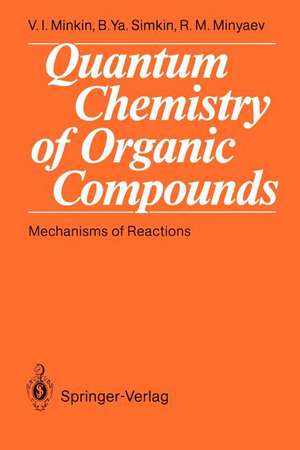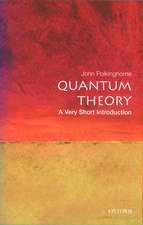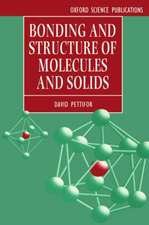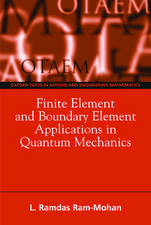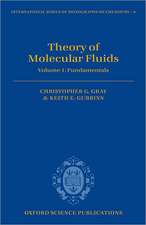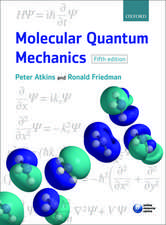Quantum Chemistry of Organic Compounds: Mechanisms of Reactions
Autor Vladimir I. Minkin, Boris Ya. Simkin, Ruslan M. Minyaeven Limba Engleză Paperback – 8 dec 2011
Preț: 387.75 lei
Nou
Puncte Express: 582
Preț estimativ în valută:
74.20€ • 79.34$ • 61.86£
74.20€ • 79.34$ • 61.86£
Carte tipărită la comandă
Livrare economică 18 aprilie-02 mai
Preluare comenzi: 021 569.72.76
Specificații
ISBN-13: 9783642756818
ISBN-10: 3642756816
Pagini: 288
Ilustrații: XV, 270 p.
Dimensiuni: 155 x 235 x 15 mm
Greutate: 0.41 kg
Ediția:Softcover reprint of the original 1st ed. 1990
Editura: Springer Berlin, Heidelberg
Colecția Springer
Locul publicării:Berlin, Heidelberg, Germany
ISBN-10: 3642756816
Pagini: 288
Ilustrații: XV, 270 p.
Dimensiuni: 155 x 235 x 15 mm
Greutate: 0.41 kg
Ediția:Softcover reprint of the original 1st ed. 1990
Editura: Springer Berlin, Heidelberg
Colecția Springer
Locul publicării:Berlin, Heidelberg, Germany
Public țintă
GraduateCuprins
1 Potential Energy Surfaces of Chemical Reactions.- 1.1 Introduction. Mechanism of Chemical Reaction and Quantum Chemistry.- 1.2 Choice of a Coordinate System and the Representation of a PES.- 1.3 Topography of the PES and Properties of a Reacting System.- 1.4 Dynamic Approach.- 1.5 Tunnelling Effects in Chemical Reactions.- 1.6 Description of Nonadiabatic Reactions.- References.- 2 Quantum Chemical Methods for Calculating Potential Energy Surfaces.- 2.1 General Requirements upon the Methods for Calculating Potential Energy Surfaces.- 2.2 Nonempirical (ab initio) Methods. The Hartree-Fock Method.- 2.3 Semiempirical Methods.- References.- 3 Effects of the Medium.- 3.1 A General Scheme for Calculating the Solvation Effects.- 3.2 Macroscopic Approximation.- 3.3 Discrete Representation of Solvent Molecules. Model Hamiltonians in the Microscopic Approximation.- 3.4 Specific Features of the Supermolecular Approach in Studies of Solvation Effects.- 3.5 Statistical Methods for Studying Solutions.- References.- 4 Orbital Interactions and the Pathway of a Chemical Reaction.- 4.1 The Role of Frontier Orbitals.- 4.2 Theory of Orbital Interactions.- 4.3 Components of the Interaction Energy of a Reacting System in a Transition State.- 4.4 Isolobal Analogy.- References.- 5 Substitution Reaction.- 5.1 Nucleophilic Substitution at a Tetrahedral Carbon Atom.- 5.2 Electrophilic Substitution at the Tetrahedral Carbon Atom.- 5.3 Nucleophilic Substitution at the Carbon Atom of the Carbonyl Group.- 5.4 Aromatic Electrophilic Substitution Reactions.- 5.5 Nucleophilic Substitution at the Nitrogen, Phosphorus, and Sulfur Centers.- References.- 6 Addition Reactions.- 6.1 Electrophilic Additions to Multiple Bonds.- 6.2 Nucleophilic Addition to Alkenes.- 6.3 Nucleophilic Addition to a Triple Bond.- References.- 7 Low-Energy Barrier Reactions. Structural Modelling.- 7.1 The Principle of Correspondence Between Structures of the Initial and the Transition State of Reaction.- 7.2 Nucleophilic Rearrangements and Tautomerizations.- 7.3 Cyclization Reactions.- 7.4 Topochemical Reactions.- References.- 8 Radical Reactions.- 8.1 Specific Features of the Theoretical Analysis of Radical Reactions.- 8.2 Free-Radical Reactions.- 8.3 Reactions with Formation of Biradicals.- 8.4 The Reactions of Carbenes.- References.- 9 Electron and Proton Transfer Reactions.- 9.1 Electron Transfer Reactions.- 9.2 Proton Transfer Reactions.- References.- 10 Pericyclic Reactions.- 10.1 Reactions of Cycloaddition.- 10.2 Electrocyclic Reactions.- 10.3 Sigmatropic Rearrangements.- 10.4 Haptotropic Rearrangements.- 10.5 Ion-Radical Pericyclic Reactions.- References.- List of Abbreviations.
